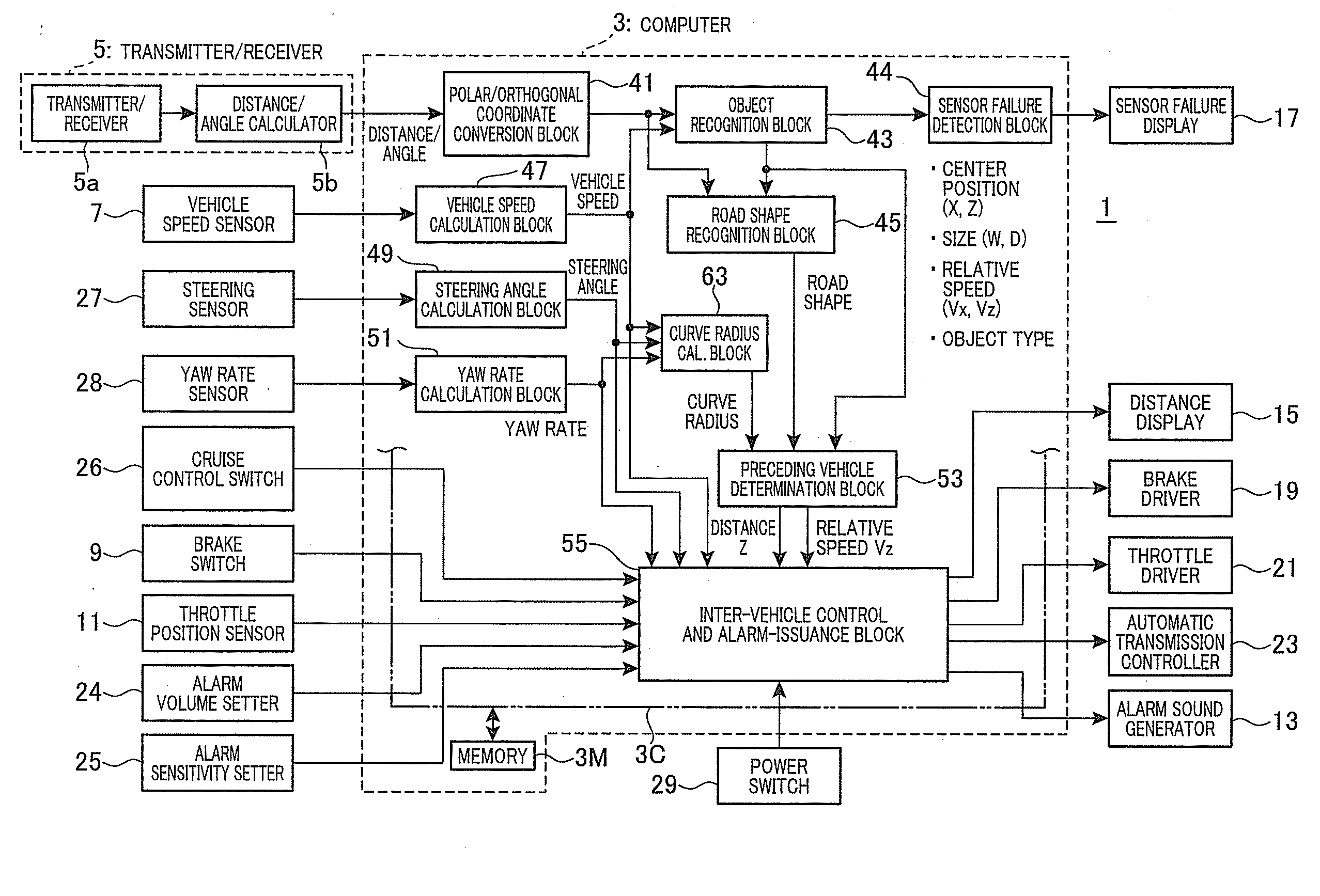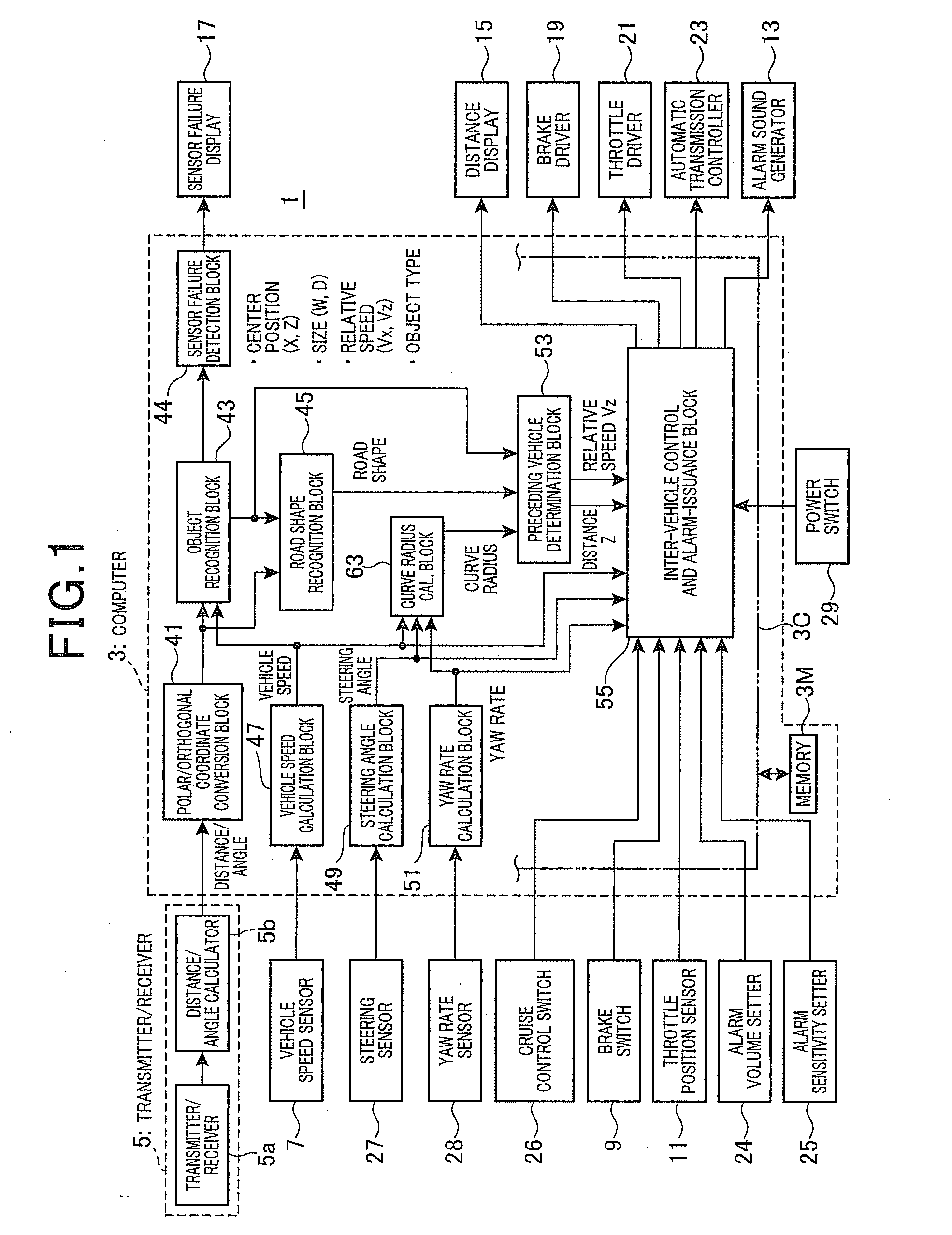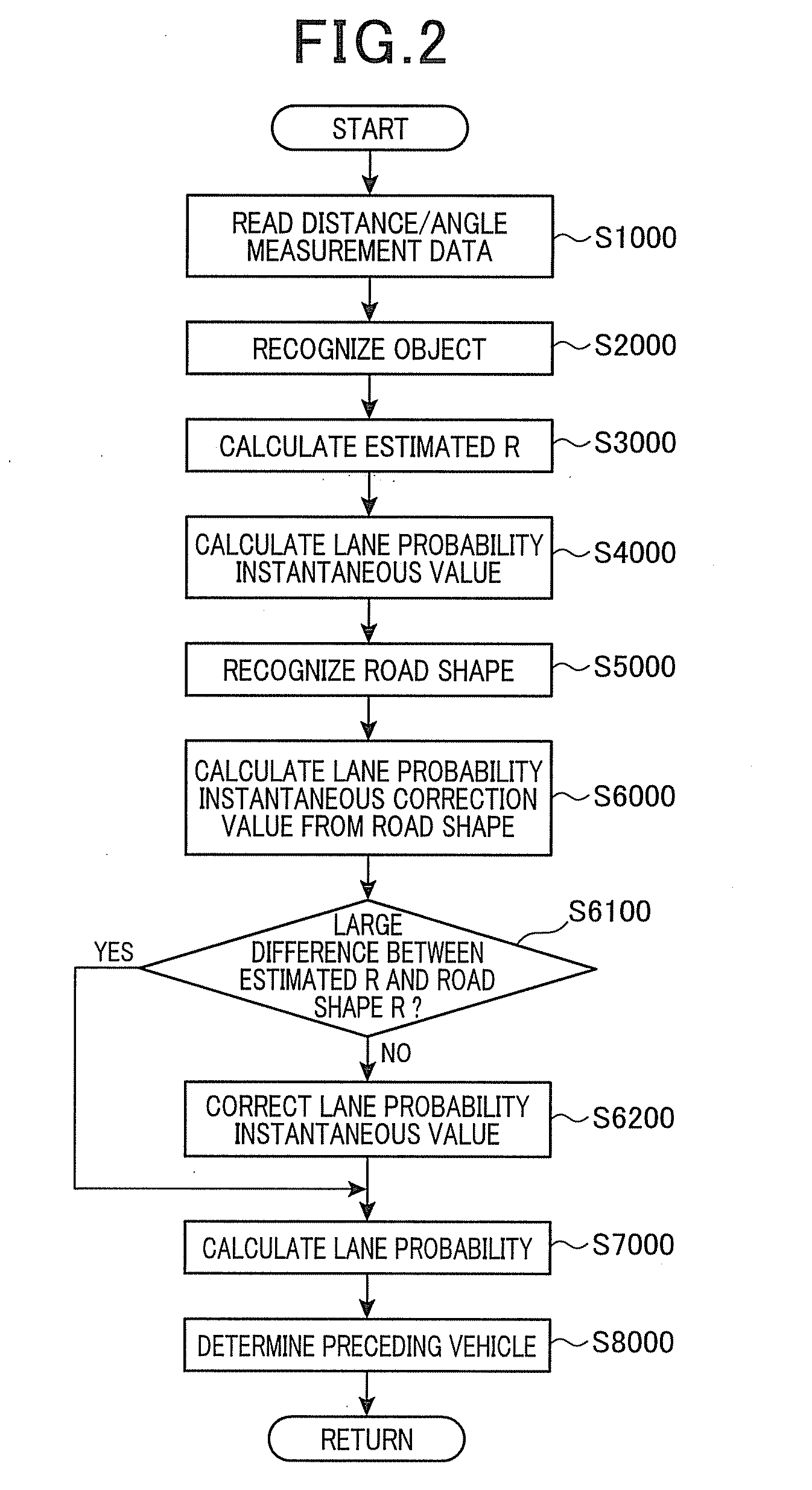Method and apparatus for recognizing shape of road for vehicles
a technology for recognizing the shape of roads and vehicles, applied in the direction of vehicle position/course/altitude control, process and machine control, instruments, etc., can solve the problems of affecting the correct road shape recognition, the state of turn of the vehicle is usually not in conformity with the shape, and the technique is unlikely to provide a correct estimation when the vehicle is driving, etc., to achieve the effect of calculating the shape of the road more accurately and good frequency
- Summary
- Abstract
- Description
- Claims
- Application Information
AI Technical Summary
Benefits of technology
Problems solved by technology
Method used
Image
Examples
first embodiment
[0100]Referring to FIGS. 1 to 10, a road shape recognition method and apparatus for vehicles according to a first embodiment of the present invention is described.
[0101]FIG. 1 illustrates a configuration of a vehicle control apparatus 1 to which the road shape recognition apparatus for vehicles is applied. The control apparatus 1 is installed in a motor vehicle and raises an alarm when obstacles are present in a predetermined situation in an area that requires issuance of an alarm or controls the vehicle speed in conformity with a preceding vehicle.
[0102]FIG. 1 is a system block diagram of the apparatus 1. The vehicle control apparatus 1 is mainly composed of a computer 3. The computer 3 is mainly composed of a microcomputer and includes an input / output interface (I / O) and various drive circuits and detection circuits. Since these hardware components are generally used ones, detailed description is omitted. Thus, the computer 3 includes a CPU (central processing unit) 3C as an arith...
second embodiment
[0273]Referring now to FIGS. 12 to 17, hereinafter is described a road shape recognition method and apparatus for vehicles according to a second embodiment of the present invention.
[0274]It should be appreciated that, in the second and the subsequent embodiments, the components identical with or similar to those in the already described embodiment are given the same reference numerals for the sake of omitting or simplifying explanation. However, in describing a process of recognizing a road shape, excessive omission of overlapped explanation may make the understanding of the context difficult. In such a case, therefore, an overlapped explanation may be given.
[0275]FIG. 12 is a diagram illustrating a configuration of a vehicle control apparatus 1 to which the road shape recognition apparatus for vehicles of the present invention is applied. The vehicle control apparatus 1 is described focusing on the differences from the first embodiment.
[0276]In the computer 3, the data of a distanc...
third embodiment
[0309]Referring to FIGS. 12, 18, 14, 19 and 15 to 17, hereinafter is described a road shape recognition method and apparatus for vehicles according to a third embodiment of the present invention.
[0310]The vehicle control apparatus 1 to which the road shape recognition apparatus for vehicles according to the present embodiment is applied includes hardware components similar to those shown in FIG. 12.
[0311]Description of the vehicle control apparatus 1 according to the present embodiment is focused on the differences from the second embodiment.
[0312]Referring to the flow diagram shown in FIG. 18, herein after is described an operation involved in the road shape recognition. At an initial step S1000 shown in FIG. 18, distance / angle data is read by the distance / angle measuring device 5. Specifically, the distance / angle measuring device 5 acquires distance / angle data corresponding to one scan. In this case, the scanning cycle is 100 msec and thus the distance / angle measuring device 5 acq...
PUM
 Login to View More
Login to View More Abstract
Description
Claims
Application Information
 Login to View More
Login to View More - R&D
- Intellectual Property
- Life Sciences
- Materials
- Tech Scout
- Unparalleled Data Quality
- Higher Quality Content
- 60% Fewer Hallucinations
Browse by: Latest US Patents, China's latest patents, Technical Efficacy Thesaurus, Application Domain, Technology Topic, Popular Technical Reports.
© 2025 PatSnap. All rights reserved.Legal|Privacy policy|Modern Slavery Act Transparency Statement|Sitemap|About US| Contact US: help@patsnap.com



